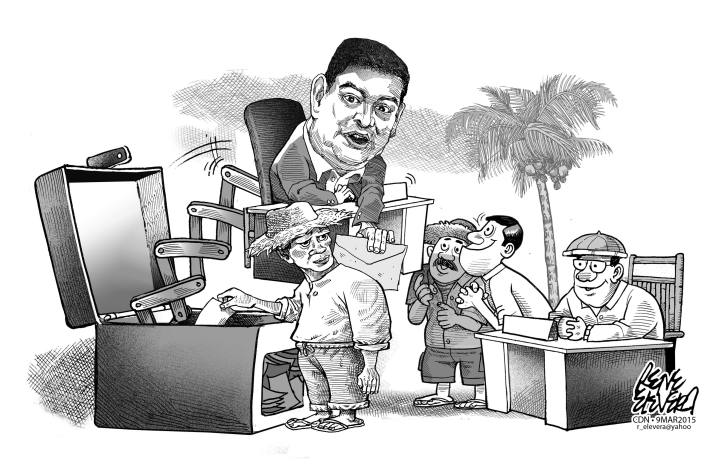While Congress is working on instituting reforms in the Sangguniang Kabataan (SK) and deciding whether or not to retain or abolish it, it is good to note that the Senate is also working on reforms in the barangays.
Sen. Teofisto Guingona III, when he’s not going after the likes of Vice President Benigno Aquino III in his capacity as blue ribbon committee chairman, is said to be working on a bill that would reform the barangays that include giving some benefits for both incoming and outgoing barangay officials.
While some proposals like financial benefits for former barangay officials are valid, others have political elements to it.
One such proposal includes extending the three year term of barangay officials from three years to four. While they have the same length of service as mayors, governors and lawmakers, they don’t have the resources at their disposal that their higher ups in the local government level have.
Thus they often complain about making frequent trips to their mayors and governors to beg for assistance and projects which these local executives are actually all too happy to give in exchange for their undying loyalty in the elections.
The system works both ways—in order to keep that loyalty, said local officials will be forced to shower the barangay officials with funds especially those who have the biggest number of constituents to win over come election time.
We understand that Guingona and other lawmakers are listening to suggestions and proposals on this bill so how about this suggestion; granted that their terms would be extended to four years, there should be a limit as to how many times they can run for reelection in order to avoid instituting a dynasty of sorts similar to what is happening on the upper levels of elective office.
Another tricky proposal involves breaking up larger barangays into smaller ones which is similar though smaller in scope to the practice of lawmakers to divide up a province or city into smaller units in order to better enhance their control over it.
While there’s some validity to concerns that some barangays are simply too large to service—one barangay has over 25,000 constituents for example—dividing barangays should not be done indiscriminately in order not to stretch a local government’s resources further beyond its limits.
The hard part about dividing a province or city is the allocation of resources from the national to the local government level. It’s not unlike moves by a fourth to third class municipality to seek cityhood status in order to receive a bigger Internal Revenue Allotment (IRA).
In instituting reforms to the barangays, Congress should avoid parlaying measures that only serve to consolidate the incumbent’s hold on power and instead ensure that governance mechanisms are in place to expedite the delivery of services and programs to Filipinos.
Disclaimer: The comments uploaded on this site do not necessarily represent or reflect the views of management and owner of Cebudailynews. We reserve the right to exclude comments that we deem to be inconsistent with our editorial standards.

